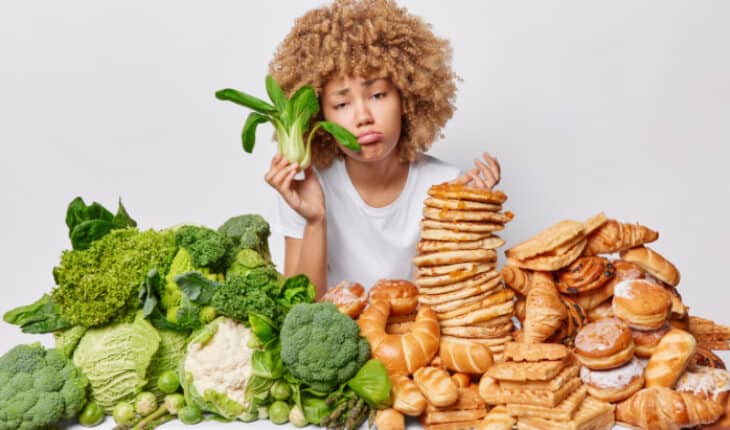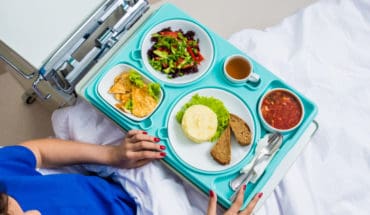New year health-kick losing momentum? Psychologists from the University of Aberdeen have identified a key factor that can make healthy food more appealing and may help curb cravings for calorific snacks.
The study published in the journal ‘Food Quality and Preference’ looked at how ‘readiness-to-eat’ influenced food cravings. The results showed that instantly edible food was around 15 percent more appealing than food that needs even the slightest preparation – be it cooked, peeled or even just pulled out of the packet.
This key difference was true of meat, fruit and vegetables, even chocolate and crisps. Across the board, the results showed that the people craved instantly edible food more strongly. So, a peeled orange elicited higher cravings than an unpeeled one and a closed bag of crips brought lower cravings than an open one.
In the study, Dr Constanze Hesse and Dr Helen Knight, Senior Lecturers in the School of Psychology showed more than 200 volunteers images of food in different stages of preparedness and asked them to rate how much they craved it. For example, a raw piece of salmon was compared to a cooked piece of salmon, and a whole unpeeled pineapple was compared to a chopped pineapple.
This is the first time anyone has looked at how readiness-to-eat impacts food cravings.
Dr Constanze Hesse who led the research explains: “There is plenty of research that has shown that higher-calorie foods are linked to higher cravings, so that is already well established.
“The interesting thing we found is that food cravings are much higher for instantly edible foods compared to foods that needed to be cooked, chopped or peeled, or even unwrapped.
“The biggest difference was for raw compared to cooked foods, followed by unpeeled or packaged compared to peeled or unpackaged food, and finally for chopped and unchopped foods.
“Interestingly, we also found that the hungrier people were, the greater the effect of readiness to eat.”
Dr Hesse says the research should be applied when promoting healthy eating campaigns and suggests that the fast-food industry already capitalise on this: “Calorie-dense food is often marketed in a prepared and ready-to-eat way, just think about adverts for burgers or pizza. In contrast to this, low-calorie food is often shown unprepared, for example raw salmon or heads of broccoli which need effort and further preparation to make them ready to eat.
“It would be more effective if public health services used pictures of ready-to-eat healthy food on their adverts as we now know that this makes it more appealing and more likely to encourage healthy food choices.”
Dr Knight adds: “As well as obvious benefits for health promotion campaigns – it is also really important for all of us to know that readiness-to-eat affects how much we crave certain foods.
“So, if you are starting this year trying to eat better, be sure to prepare healthy food to encourage healthy choices and avoid going food shopping when you’re hungry as this can make you crave more ready-to-eat snacks which are typically not as healthy as home-cooked food!”
- Gut microbiome could delay onset of type 1 diabetes - 3rd April 2025
- The da Vinci 5 Robot Is Set To Transform Bariatric Care: - 31st March 2025
- Beyond money: the hidden drivers fuelling child food insecurity - 31st March 2025






